- News
- Reviews
- Bikes
- Accessories
- Accessories - misc
- Computer mounts
- Bags
- Bar ends
- Bike bags & cases
- Bottle cages
- Bottles
- Cameras
- Car racks
- Child seats
- Computers
- Glasses
- GPS units
- Helmets
- Lights - front
- Lights - rear
- Lights - sets
- Locks
- Mirrors
- Mudguards
- Racks
- Pumps & CO2 inflators
- Puncture kits
- Reflectives
- Smart watches
- Stands and racks
- Trailers
- Clothing
- Components
- Bar tape & grips
- Bottom brackets
- Brake & gear cables
- Brake & STI levers
- Brake pads & spares
- Brakes
- Cassettes & freewheels
- Chains
- Chainsets & chainrings
- Derailleurs - front
- Derailleurs - rear
- Forks
- Gear levers & shifters
- Groupsets
- Handlebars & extensions
- Headsets
- Hubs
- Inner tubes
- Pedals
- Quick releases & skewers
- Saddles
- Seatposts
- Stems
- Wheels
- Tyres
- Health, fitness and nutrition
- Tools and workshop
- Miscellaneous
- Tubeless valves
- Buyers Guides
- Features
- Forum
- Recommends
- Podcast
feature
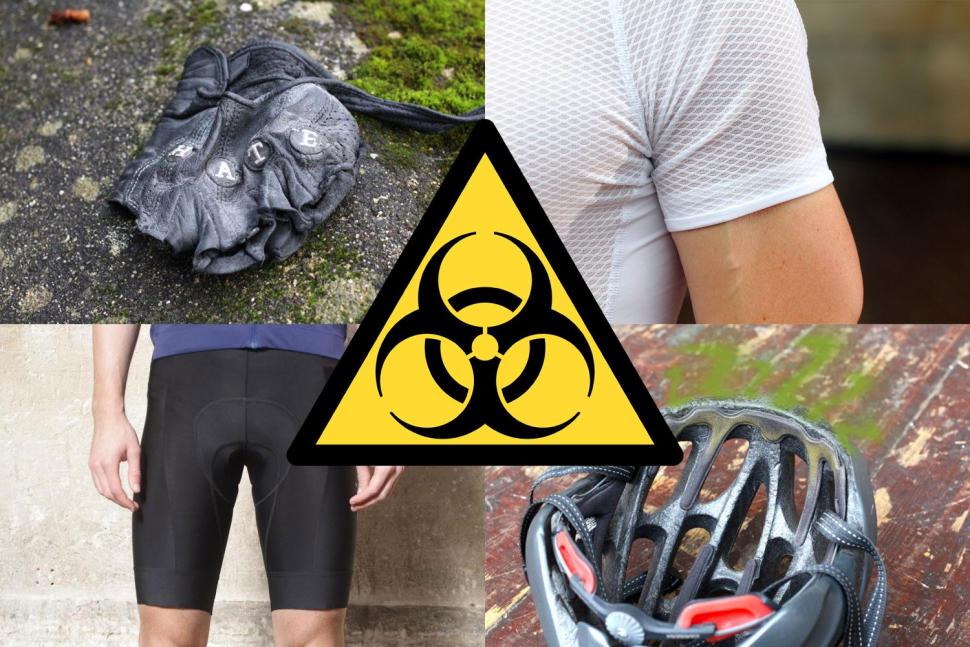 cycling-biohazards.jpg
cycling-biohazards.jpgCheck out the 6 worst bike kit bio-hazards — and how to beat them
Cycling: it’s healthy, it’s addictive, it’s an itch that every cyclist has to scratch. That’s just as well because all that pleasure can have a price, one that if you’re unlucky involves itching, scratching and a variety of noxious odours.
Most of us know about the smellier (and worse) side effects of cycling. Many of us simply accept them as part of the price we pay for our cycling addiction. But it doesn’t have to be that way. The bio-hazards we all face (well, ‘create’ if we’re being accurate) can be neutralised and beaten, you just need to know what they are, how to avoid them, and what to do if you can’t.
The following article lists the threats, the most effective avoidance techniques, and the remedies. It contains sweat, ointment, and cat litter. Oh, and it probably shouldn’t be read while you’re eating.
Helmet honk
We’re not going to rehearse all of the pros and cons of bicycle helmets here, but one undoubted downside for some people is that if you don’t keep it clean it will inevitably start to honk. Badly. We say ‘some people’ because in our experience helmet honk is the one cycling bio-hazard that doesn’t seem to affect every cyclist. Some people sweat buckets, never clean their lid and never seem to have a problem. Others only need to emit a mild glow for their helmet’s delicate ecological balance to be thrown out of whack with pongy consequences.
That’s not the worst of it either. A smelly, sweaty bike helmet can be a breeding ground for all sorts of nasties besides the bacteria producing the smell as they break down the secretions from your sweat. No, the worst of it is that various fungal spores also really like the tasty mixture of fats and sugars on offer in the warm, moist conditions of your cycle helmet, especially in summer. If they come into contact with your sweaty scalp they’ll have hit the mother lode and you’ll have an itchy rash on the top of your head. You might also get a rash or irritated skin on your forehead, under your chin or even down the side of your face from sweaty helmet straps.
Helmet honk and its attendant horrors are most likely to strike during the summer when it’s hot and you’re doing your best sweating, but it can strike any time if you sweat a lot and you don’t keep things clean.
What can be done?
Well, first off an ounce of prevention is worth a pound of cure, so regularly give your helmet pads, any lining, plus the straps a regular clean. How often? Well, give it a sniff and your nose will tell you. Your best bet is to wash the pads well in hot, soapy water, and sponge the straps an any soft material on the inside of the helmet in the same. You could also give the pads a splash of something antibacterial, although you should avoid letting anything solvent based come into contact with the helmet shell. You can get various helmet cleaning sprays and potions, but soap and water generally seem to do the trick.
Don’t worry if your helmet has given you a rash (it happens to the best of us). It’s most likely a sweat rash caused by the combo of heat, friction and close contact with the nasties in your helmet liner pads. Cleaning the pads should sort it. If it doesn’t, a quick visit to your pharmacist to get some antifungal cream should do the trick (we might as well just cut and paste that last line into the rest of the article now! – Ed).
Winter shoe
I’m getting a strong hint of expensive French cheese, probably artisan produced, whiffy but not in a totally bad way. That’s summer cycling shoes.
Now take your expensive cheese and spray it for three months in a mixture of black/brown road spray containing a nutritious mix of soot, salt, brake dust and, if you’re lucky enough to ride in the country, animal slurry. At the same time, marinade the inside (yeah, okay, the cheese analogy breaks down at this point) in sweat. Let it rest periodically to digest itself. That’s your winter shoe. It doesn’t just smell like a swamp, it IS a swamp.
The only good thing to say about the winter shoe is that it’s nowhere near as dangerous a bio-hazard to its owner or innocent members of the general public as its smell would suggest. If it were, you’d need a licence to own cycling footwear.
Ironically, it’s the cheesier summer cousin that’s a more conducive environment for athlete’s foot and the like, being generally warmer and sweatier. That’s not to say that winter cycling shoe can’t inflict some fungal damage to your feet, but depending on the amount of time you spend in the saddle and how hot and sweaty or cold and wet you get, it’s as likely to be trench foot as athlete’s foot that lurks in its dank, smelly interior.
No, the most usual and persistent hazard posed by the winter shoe is to your sense of smell, and also to your socks - just dipping your foot in them gives even the freshest pair of socks the taint of the swamp. Obviously, no one would be so stupid as to put their bare feet in there… would they?
What can be done?
You’re probably never going to get your winter shoes smelling as fresh as a new mown meadow, but there are some simple steps (no pun intended) you can take to greatly reduce their nasal impact.
1. Dry them properly after wet rides!
Don’t leave your shoes in a cold, wet post-ride heap decomposing by the door. If you do that they’ll warm up just enough for their microbial population to start multiplying, but not enough to dry out before you deliver another infusion of sweat and road spray.
Instead, put them somewhere warm where they can dry out properly. Stuffing them with old newspaper helps considerably. In extreme cases you can trying filling a pair of old socks with cat litter and pushing them right into your shoes. The cat litter should both absorb the moisture and neutralise the smell. This technique is a variation on something we’ve seen recommended for dealing with smelly gloves but it seems even more appropriate for cycling shoes.
2. Clean ’em!
No, not by going for a ride in a particularly heavy shower but by actually giving them a good wipe down, taking the insoles out and giving them a proper clean. You may even want to consider giving the insides a dose of antibacterial spray every now and again. Your shoes will thank you, and so will your nose… and the noses of anyone else who shares your home or workspace.
What about overshoes, over-socks and shoe covers?
Overshoes will keep some of the muck off but unless it’s properly cold it’s going to be sauna time for your toes. Also, depending on what they’re made from, even if they’re warm they may not actually keep the outside of your shoes dry for very long either. If you then take your shoes off with the over-shoes still in place you’ll just trap all that noxious moisture in there for even longer.
Over-socks? There is some debate in the road.cc office as to whether these are slightly pointless or totally pointless in wet conditions. They might keep your shoes cleaner than they’d otherwise be, but… pfft.
Don’t sniff the glove!
If someone ever worked out how to weaponise cyclist’s gloves we’d all be in deep do-do. Thankfully, that nightmare scenario hasn’t occurred yet, and nor has one entered the public water supply despite the predilection of sportive organisers up and down the land to play with fire by routing their events around reservoirs.
The glove is every cyclist’s guilty secret. We know what your gloves are like… and you should be ashamed of yourself.
Unlike the cycling shoe, your cycling glove generally (though not always) keeps its punch to itself. You have to get right up close and then… BAM! An olfactory overload that would fell a cart horse.
Summer mitts tend to be even worse than winter gloves. The combination of constant sweating plus regular nose-wiping (we did warn you that this wasn’t going to be pleasant) makes for a super-potent combo. Some nasty things live up your nose, and we don’t mean bogeys.
We’ve heard guilty tales of gloves that practically crackled when taken off. While your gloves are teeming with unpleasantness and in many cases are well on the way to becoming sentient life forms in their own right, we’ve not yet heard of anyone being harmed by them, although we’d never advise sniffing (even if you don’t inhale).
Finally, it’s probably worth saying that if you ever have to deal with a broken skin injury – your own or someone else’s – it might be an idea to take your gloves off first.
What can be done?
Easy! Wash your gloves regularly on the hottest wash they’ll stand – most care instructions say 30°C but I wash mine at 40°C – then dry them thoroughly.
Alternatively, another remedy we’ve seen touted is to cut the toes off old socks to create some small parcels that you fill with cat litter, then sew up and stuff in your gloves - the theory being that the cat litter both soaks up the moisture and neutralises the smells. Well, it works for cat pee. Anyway, we reckon that’s going a bit far.
Whatever you do, there may come a point where even washing your gloves isn’t going to make much of a dent in the smell. At that point you have two choices: learn to live with the smell or get some new gloves. We won’t judge you either way.
Crotch rot
Non cyclists always assume that a cyclist’s shorts will be the – what’s the technical term? – ah yes, ‘yuckiest’ bit of kit on the cyclist’s person, to which most cyclists will respond, “Pah! You haven’t sniffed my gloves.”
However, although the germ count and potential for mass slaughter residing in your gloves is not to be sniffed at (sorry!), it’s your shorts that have the ability to do you most harm.
Boils and irritating chafing are bad enough but ointments, better shorts, more regular changes, and generally keeping things clean will usually deal with those. Unfortunately, there is another hazard that is much, much worse. It goes by many names, crotch rot and jock itch being two of the most common. Basically, it’s athlete’s foot, but not on your feet.
All of the aforementioned remedies for boils and chafing will help guard against it, but they won’t necessarily be enough to stop you getting it. Once you’ve got it, crotch rot can be very difficult to get rid of.
How to keep things healthy in your shorts
Keep ’em clean. The combo of modern antimicrobial pads and detergents do a good job of dealing with the microbial load that builds up in your shorts during and after a ride, but don’t push it. There is much debate on how often you should change your shorts. Some say after every ride, regardless of duration, although these tend to be people who make shorts.
Many cyclists take a different view, reasoning that a week’s worth of short commutes might only add up, in sweat terms, to one weekend ride, so what’s the harm? That’s one you’ll need to work out for yourself. If you are taking this route, careful post-ride shorts monitoring is a must (there's a phrase you didn't expect to read today, right?). Obviously, if you start developing boils you’ve left things too long!
Get your shorts dry as quickly as possible once you’re out of them and give them a good airing. Turn them inside out.
Oh, and if you’re a commuter taking the multi-day approach to shorts hygiene and your workplace doesn’t have a shower, remember that the baby wipe is your friend (don’t flush ’em!).
Guarding against the fungal menace
First – and this is blindingly obvious – never, ever wear another cyclist’s shorts! Not even if they’re clean.
The microbiology and ecological balance of your shorts is unique to you. Some of the flora and fauna that have made their home there and which may well exist in benign balance with your nethers may turn rogue in combination with someone else’s ‘lower torso’ and vice versa, so just don’t do it.
For most cyclists the most likely cause of a fungal flameout in the shorts department is another bit of your own body, most likely your feet.
Athlete’s foot is more than happy to colonise other sweaty bits of your anatomy using your clothing as a method of transmission. For that reason, put on your socks before you put on your shorts to guard against fungal spores jumping off your feet and onto your seatpad on the way through.
You need to be just as careful if you ride in normal clothes rather than Lycra, particularly if you work up a sweat. We’d recommend having a change of underwear at work and adopting the same baby wipe routine as the Lycra wearer, otherwise you might as well buy shares in Canestan.
What to do if the itch strikes?
If you do get crotch rot, Canestan or another anti-fungal treatment is going to loom large in your life. If you’re lucky that will be enough, but while the antimicrobial pad in your shorts is great at fighting microbes, fungal spores are another matter entirely and once they are in there they probably ain’t coming out.
There’s more bad news: those fungal spores are also likely to be in any other cycling shorts you own and also in your underwear. A doctor I once asked about this advised a two pronged approach: regular applications of an antifungal cream plus getting rid of all your cycling shorts and all your underwear – yes, even those Power Ranger ones you got for Christmas in 1994 – and starting again. You can now see why athlete’s foot is so hard to get rid of. Not many of us want to chuck our shoes and socks away because we’ve got itchy feet.
Putrid base layers
Base layers have a difficult life shifting sweat away from your skin so that you stay dry and comfortable.
You have two different sorts of sweat glands. Eccrine sweat glands, which cover most of your body, produce water-heavy sweat that contains sodium, chlorine and potassium. Your apocrine sweat glands, located in areas where there are lots of hair follicles such as under your arms, produce a thicker mix that contains the regular ingredients plus fatty acids, urea and ammonia. Bacteria on the surface of your skin interacts with sweat, and it’s that which smells.
Your base layer has to cope with the lot, along with skin cells. It’s not a particularly pleasant soup and it gets worse the longer you leave it to simmer. Left unchecked it could be nasty.
What can be done?
The biggest problem for you and people around you is likely to be the odour. We all know that base layers can quickly start to reek.
Some base layers are more prone to smelling than others. We find that polyester base layers are often among the worst offenders. Wool, on the other hand, has natural antibacterial properties – those sheep are smarter than you might think – so it resists odours, and that’s one of the reasons many people love a merino next to their skin. Base layers containing bamboo (not sticks of the stuff, obviously) are designed to be antibacterial too.
The best advice is to wash your base layers frequently. You’ll probably want to wash synthetic base layers after every ride – certainly after every ride where you’ve worked up a sweat (and even if you ride at a low intensity, that’ll be the vast majority of them). If it walks to the washing machine on its own volition, that’s a sign.
You might get more than one ride between washes with wool, but you could check that your judgement is similar to that of other people by getting someone to perform a simple sniff test. It doesn’t matter what they say, it’s whether or not they flinch that counts.
Normal washing will kill most bacteria. If some bacteria do survive washing, it’s probably not a huge problem.
If your base layers still smell after washing – and some synthetics are far more prone to this than others – you can try something like Nikwax Basewash which is designed to clean and deodorise, and also to inhibit the build up of body odours in future.
It’s not a base layer but if you use a heart rate strap don’t forget to clean it regularly according to the manufacturer’s instructions. There are all sorts of nooks and crannies in those things where bacteria can hide away before jumping out on your skin. If you start getting unexplained spots or blemishes on your torso, your heart rate strap is a good place to start your investigations.
Manky water bottles
Water bottles can harbour all kinds of nasties if you’re not careful. Check the inside of your water bottle and chances are that it looks pretty clean, right? Now check the lid, and more specifically the valve. Still clean?
If so, you’re doing well. Often, though, residue from energy drinks and gunk from the road gets in there and it can be quite hard to get out, depending on the design… and then stuff starts to grow in there and you’re in all sorts of bother. Bear in mind that anything in your water bottle is going straight into your system in a very direct manner – not through your skin but straight down your throat.
A lot of big teams use water bottles once and then give them away. Washing them well enough to make sure riders stay perfectly healthy would take a lot of work, so the teams use their logoed up bottles as a marketing exercise and simply offload them.
For the rest of us who actually have to pay for our water bottles, that’s not a luxury we can afford.
What can be done?
You need to clean you water bottle carefully. You know that many (not all) bite valves can be removed for cleaning and replaced afterwards, right? You can just pull them away. If you’ve not done this before, you might be horrified at what you find lurking in there.
Clean your water bottle on the top shelf of the dishwasher (assuming the manufacturer doesn’t warn against this) or wash it by hand in warm, soapy water. A bottle brush will come in handy.
If you’re worried you can use something like Milton sterilising fluid to remove any micro-organisms from your water bottle, and sooner or later you’ll have to consign it to the bin and get a new one. We’re not advising you to lob away something just for the sake of it, but water bottles certainly have a shelf life.
road.cc's founder and first editor, nowadays to be found riding a spreadsheet. Tony's journey in cycling media started in 1997 as production editor and then deputy editor of Total Bike, acting editor of Total Mountain Bike and then seven years as editor of Cycling Plus. He launched his first cycling website - the Cycling Plus Forum at the turn of the century. In 2006 he left C+ to head up the launch team for Bike Radar which he edited until 2008, when he co-launched the multi-award winning road.cc - finally handing on the reins in 2021 to Jack Sexty. His favourite ride is his ‘commute’ - which he does most days inc weekends and he’s been cycle-commuting since 1994. His favourite bikes are titanium and have disc brakes, though he'd like to own a carbon bike one day.
Latest Comments
- Mr Blackbird 20 min 11 sec ago
We need to also take into account the van driver's viewpoint. He may have been obese and on his way to McDonalds for a salt/ sugar / fat fix. Can...
- HKR 1 hour 12 min ago
Can't believe that child threw his bike on the floor at the end of that. Young people today have no respect... ;))
- Griff500 3 sec ago
Its not the same stem fitted to the two bikes though, and we aren't talking about HTA we are talking about stem inclination or "stem rise" to use...
- TheBillder 9 hours 13 min ago
My new double glazed wooden framed sash windows are £1600 plus vat per (quite large) window. House built in 1904. The cost includes fitting and...
- galibiervelo 9 hours 29 min ago
We promote #bikefriday You dont need it - go for a spin. Nice bikes and kit are lovely, but not as noice as a dawn spin this friday morning with a...
- David9694 9 hours 32 min ago
Council acting like ‘the Sheriff of Nottingham’ with parking charges...
- David9694 9 hours 36 min ago
Man taken to hospital after vehicle crashes into pub...
- David9694 9 hours 46 min ago
Car flips in Millennium Way, Sheerness, near former Aldi supermarket that reopens as Home Bargains this weekend...
- RoubaixCube 10 hours 15 min ago
Ive been using the same £2-3 dish brush I bought from wilko, tesco or pound land for as long as I can remember. I dont understand why anyone would...



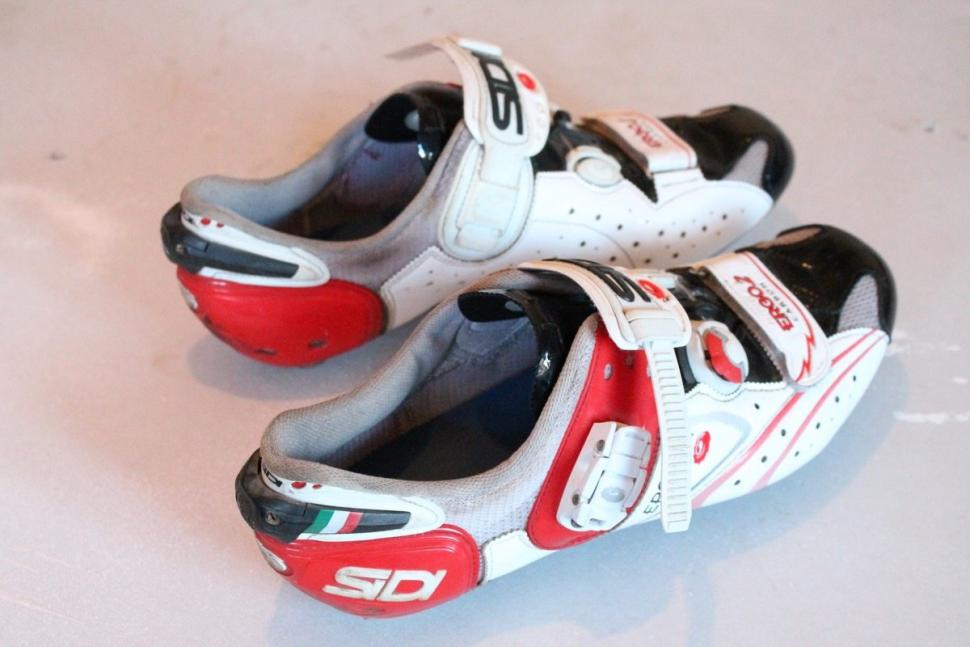
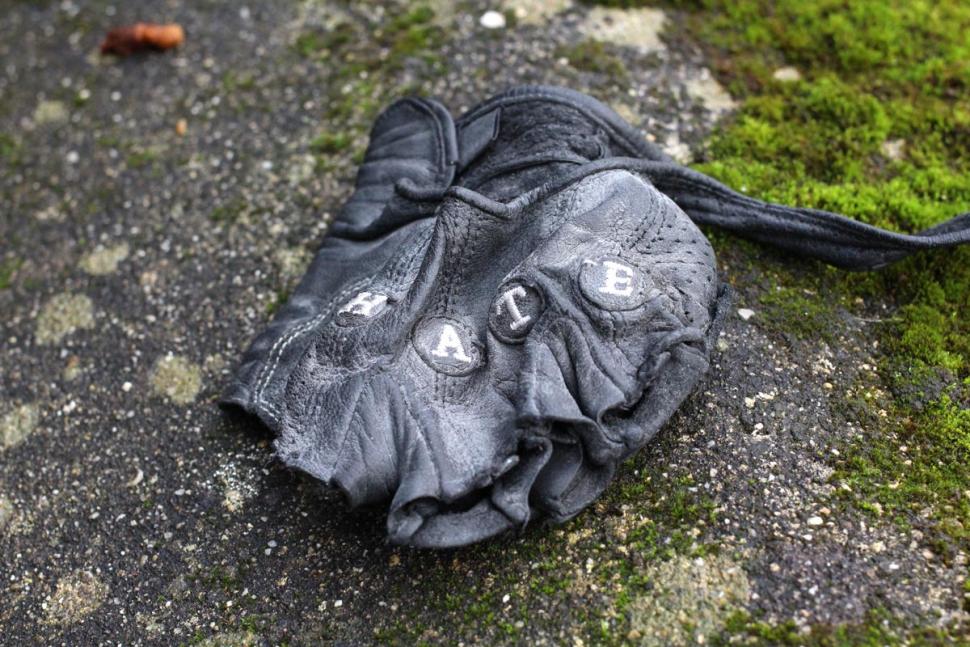


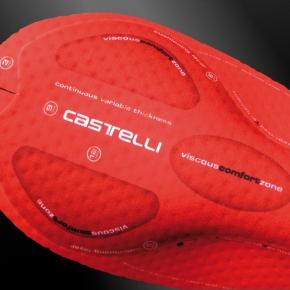

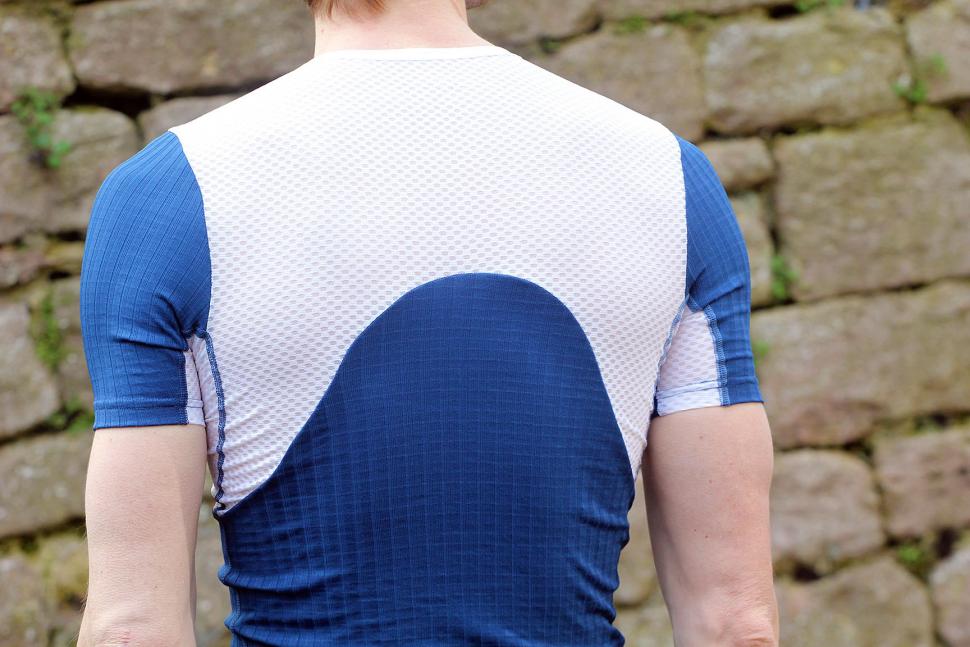


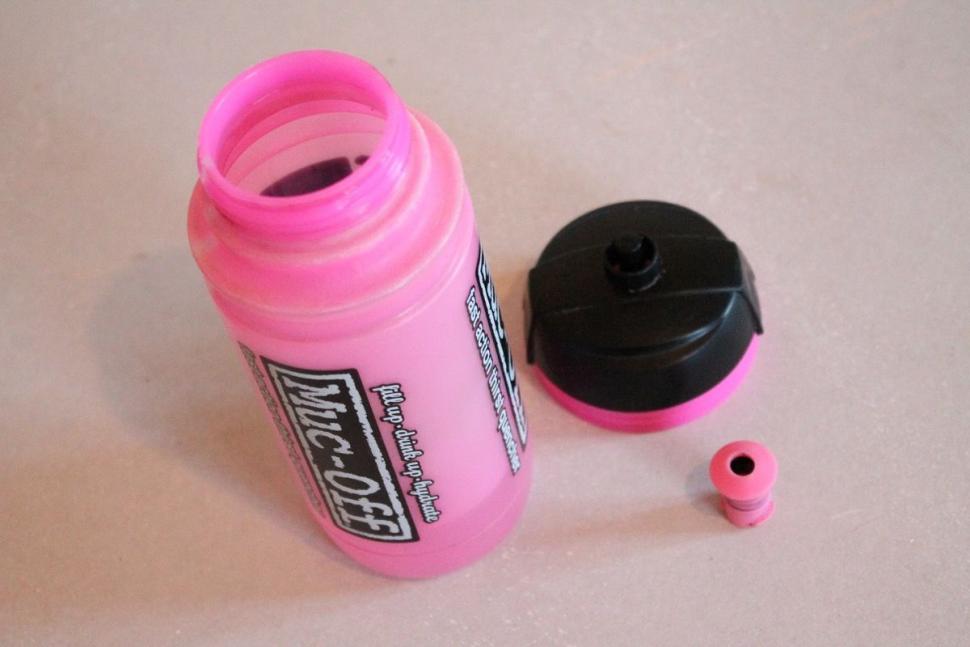
Add new comment
39 comments
Ace fabric bleach kills the bacteria(and is remarkably kind to fabrics); Febreeze is amazingly good at removing smells, especially from things that are hard to wash. Like shoes.
I find soaking base layers and summer jersey in nappysan (powdered disinfectant we used to soak our kids soild clothes into when they were babies) is great at removing the residual smell (even with a one ride/one wash policy).
Unfortunately I'm running low and it seems rather difficult to find these days.
I was suffering a bit of the crotch rot, flaming itch towards the end of the hot autumn we had, I put it down to over liberal use of sudocrem, which would have given a knock to my normal skin flora, and seemed to encourage sweating, especially at night. Less sudocrem, applied only to any chafes, and regular use of normal baby talc put a stop to it fairly quickly. Thank goodness. It's not just for the inner tubes. I have been doing the socks on first thing for many years.
Washing things regular seems to work for most of the clothing with occasional use of the dettol stuff.
I thought this article was going to be about something else altogether
This is much more helpful than a simple reminder of the merits of learning to bunny hop.
regular or cool washing with a product that has dimethylammonium chloride, works wonders.
dettol laundry cleanser or supermarket own-brands, for example.
"At that point you have two choices"
Nope, you have two options and one choice to make.
deleted post.
I had a problem with a rucksack I wore whilst cycling. The shoulder straps were padded and seemed to absorb a lot of sweat which led to them ponging after a while. They're not the easiest things to clean, so I ended up finding a tip about using a pet stain and odour remover spray. Just the job and a few squirts can be aimed at your helmet too.
Careful now!
Pages